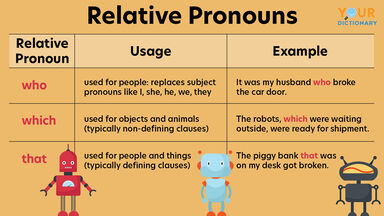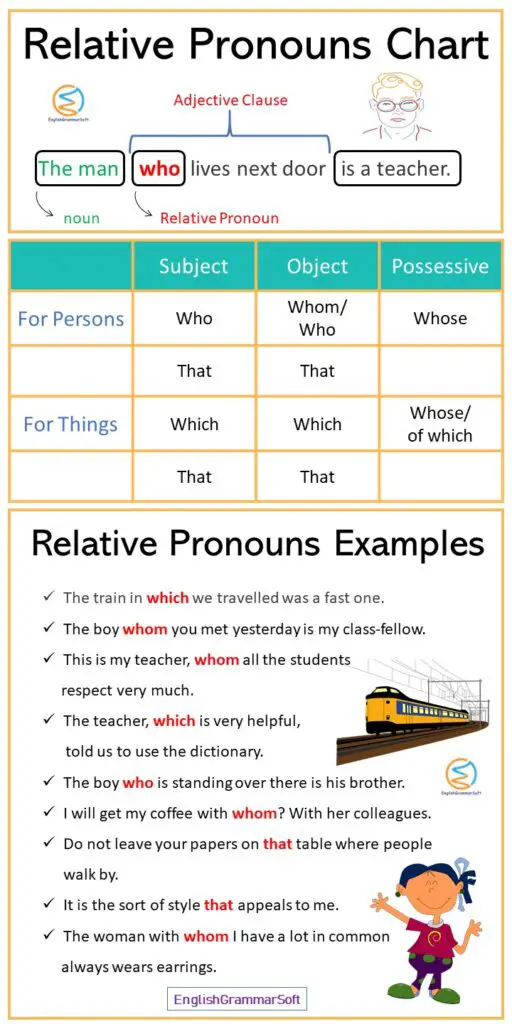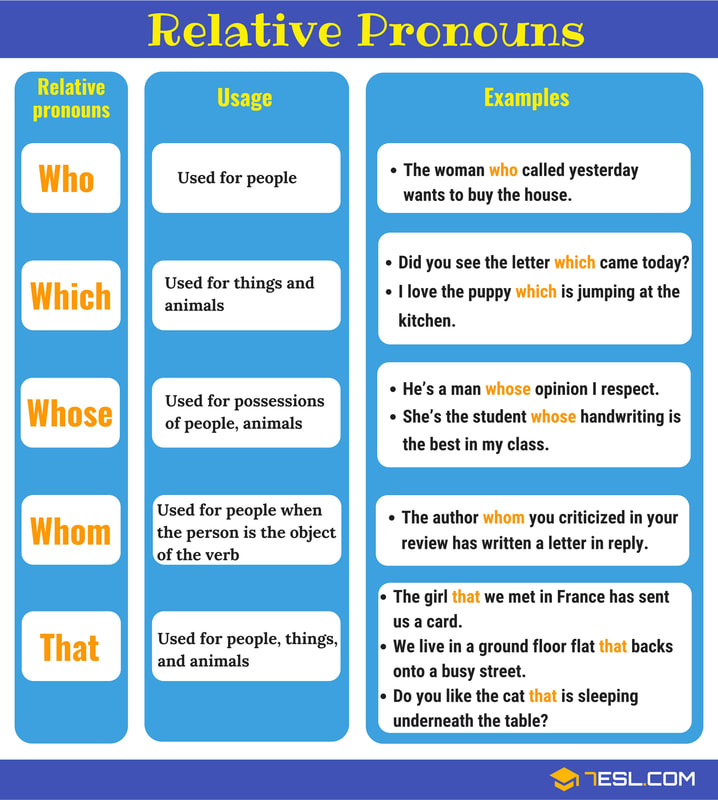

The sales representative who/that I contacted came to my office today. In formal language, Whom is used instead of Who. Prepositions go at the end of the relative clause. When the relative pronoun serves as the object, we use: Their company, which is the biggest in England, has won an award for innovation. Mr Smith, who lives in Paris, has been a writer for 20 years. This is the best digital camera that you can buy at the moment. I've done everything that is possible to help him.

'That' is normally used instead of 'which' after superlatives and after the following words All, Much, None, Little, Few, Only, Nothing, Everything, Something, Anything When the relative pronoun serves as the subject, we use: My computer, which was originally bought to do graphics work, is very fast. My mother, who lives in France, is coming to visit me next week. A non-defining clause is separated from the rest of the sentence with commas. The computer that I used to write this is six years old.Ī non-defining relative clause gives extra information about a noun that has already been identified. The woman who won the lottery this week lives in Milano. It explains 'which person.?' or 'which thing?' Defining clauses are not separated from the rest of of the sentence by commas. Relative Clauses can be defining or non-defining.Ī defining relative clause identifies the noun to which the relative pronoun refers. Relative clauses are used to say which person or thing we are talking about, or give extra information.

Relative Pronouns (who, which, that, where, whom, whose, why, what, when) are used to introduce Relative Clauses.


 0 kommentar(er)
0 kommentar(er)
